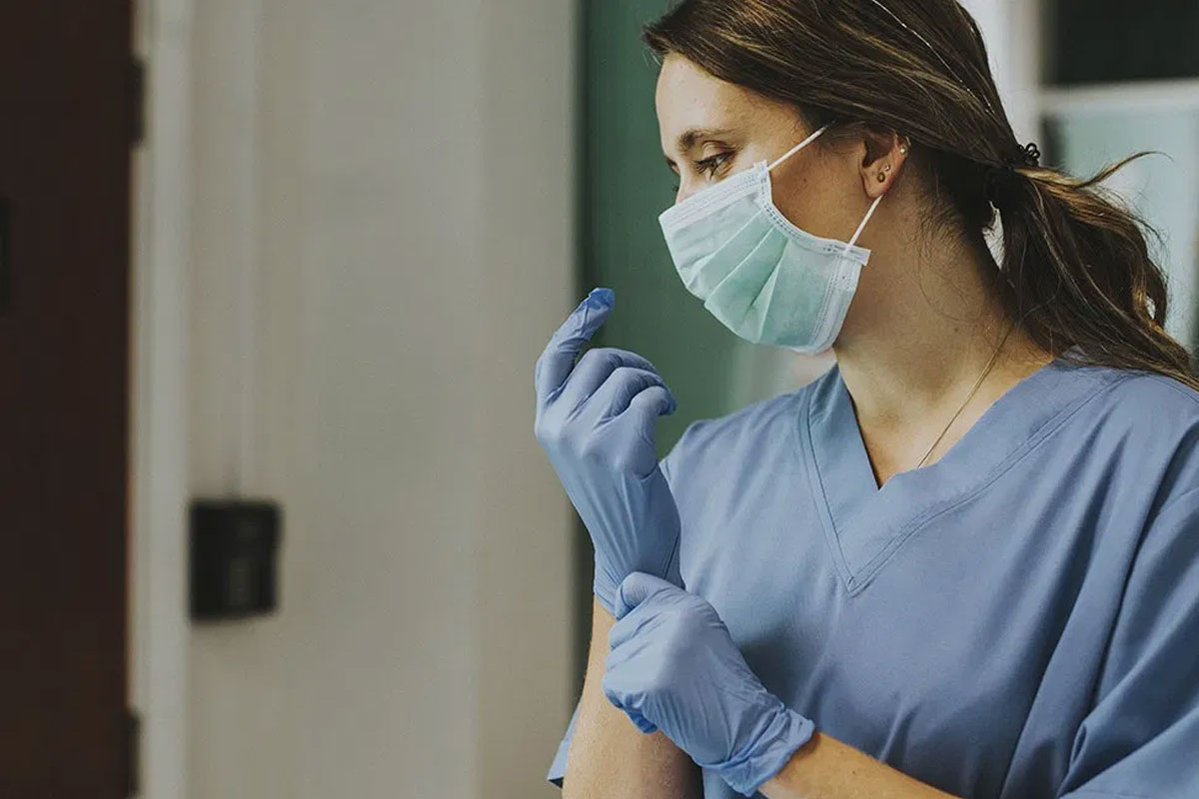How to Choose the Best Employee Safety Technology for your Hospital
by Jess Downs, on Aug 4, 2020 3:31:47 PM

Healthcare employment is the largest and fastest-growing industry in the US economy. This should come as no surprise; the tireless efforts of healthcare workers are, after all, undeniably essential to our global economy and, more importantly, our quality of life.
However, what may come as a surprise is the risks faced by healthcare workers every day, just for doing their job. Those employees who have dedicated their livelihoods to the promotion of health and the prevention/management of disease and injury are, oftentimes, left to grapple with the grim reality that hazards on the job are commonplace — if not guaranteed.
Risky Business: Identifying the Challenges Faced by Healthcare Workers
Workplace hazards faced by healthcare workers include, but are not limited to:
- Harmful exposures to chemicals and hazardous drugs
- Physical strain/ injuries
- Allergic reactions
- Patient violence
- Patient harassment/verbal abuse
In fact, verbal and physical patient harassment is, unfortunately, an all too common grievance. A Medscape.com survey published last year revealed that the majority of nurses (71%) say that they had been sexually harassed by a patient.
Presently, the mistreatment and/or the harassment of frontline workers has become especially prevalent around the globe, as frightened patients and citizens lash out in the wake of the coronavirus pandemic. Understandably, these conditions contribute to chronic stress amongst employees and the notoriously high staff turnover rate, which plagues the healthcare industry in similar fashion to the hospitality industry. In fact, hospital staff turnover rates increased from 15.2% in 2016 to 19.1% in 2019.
And so, healthcare leaders find themselves faced with an industry-defining question; if healthcare professionals’ responsibility is to care for patients, whose responsibility is it to care for healthcare professionals?
The answer, of course, is the healthcare administration. The industry at large must answer the call for improved safety measures and reform existing policies to include resources and technology that offer pro-active protection for healthcare employees. For many properties, this will consist of the implementation of employee safety devices (ESDs), better known as panic buttons, that ensure staff can be promptly located and assisted in the case of an emergency.
Of course, selecting the right staff safety technology for your hospital is no easy task. Fortunately, we can help to guide your selection process. When choosing an employee safety device platform, make sure that it has the following capabilities:
1. Wearable and Accessible
Whatever platform you choose, it should be easily accessible and convenient for your staff to keep on their person while performing their daily duties. Ideally, the device should be available in the form of a small, handheld LTE panic button, as well as a smartphone-enabled application. Both of these formats pose little to no inconvenience or disruption to staff and their standard processes while ensuring they can easily and discreetly call for help in the event of an emergency.
2. Cloud-based and Customizable
There is no ‘one-size-fits-all’ solution when it comes to staff safety. Healthcare professionals should seek out a cloud-based and customizable platform, with a range of service tiers that can scale according to the unique needs of their property. New-age, best-in-class employee safety platforms are more than just a noisemaker. Instead, these platforms can integrate seamlessly with a hospital’s existing hardware or software technology to be used as a source for geolocation data during an emergency.
3. Location Precision
In high-risk scenarios, time is of the essence. As such, the ability to pinpoint the precise location of a staff member in crisis is undeniably integral to the functionality of a safety platform. In a hospital environment, a standard noisemaker isn’t able to offer adequate support, as an audible distress signal will not provide adequate location information and, in some cases, may alert the assailant or surrounding patients that an SOS has been triggered.
With this in mind, hospitals should actively seek out an ESD platform that utilizes beacon Bluetooth technology to pinpoint the precise GPS coordinates of an employee’s distress call both on and off the property, throughout multi-story buildings. Bluetooth beacons placed throughout the property help ensure platform accuracy and real-time location information. Finally, hospital staff can rest easy knowing that help is always just a click away.
4. User-Friendly
Across industries, the successful implementation of new technology often hinges on employees’ ability to adopt it seamlessly. In this regard, inconvenient protocols and complicated interfaces act as barriers to adoption that often result in staff resistance.
With this in mind, selecting an ESD platform that is easily implemented, entirely user-friendly and convenient, and requires little to no training is undeniably paramount. Simply put, when it comes to panic buttons, calling for help should be easy.
5. Vendor Support
The implementation of new technology should be more than just a purchase; it’s an investment representative of an on-going relationship with the technology provider. When vetting prospective ESD platforms, hospitals should consider each vendor’s level of support, both during the installation phase and long after the platform is in use.
Right now, the healthcare industry has an opportunity to change its course and embrace a safer future for employees and patients alike. With the right technology in place, healthcare workers can arrive at work each day knowing their safety is the utmost priority, just as patients’ well-being is their priority. Is your hospital ready to invest in staff safety? Click here for more information.
Talk to a consultant today about React Mobile, our employee safety platform that puts panic buttons in the hands of healthcare employees.
(Article originally posted by our partners at PDC Healthcare.)

